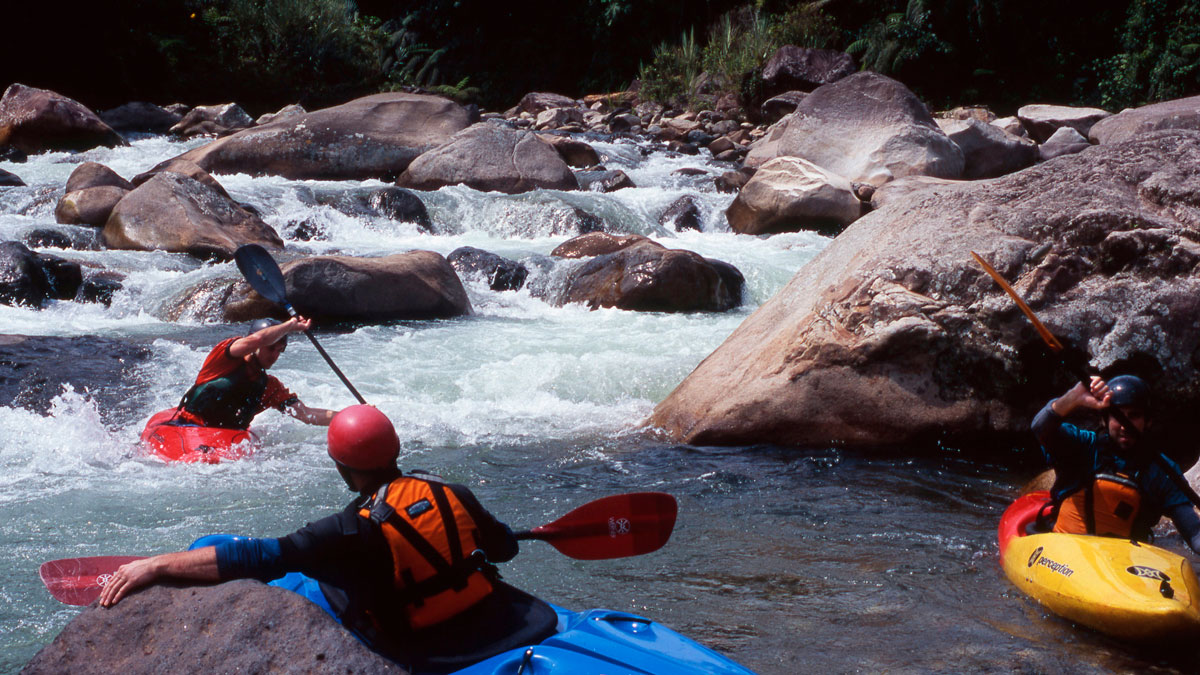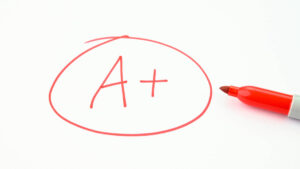Row Your Boat Part 2: Which ASX players are looking to produce lithium carbonate?

Picture: Getty Images
- Lithium carbonate prices have trailed hydroxide this year
- But that is not always the case, and BMI suggests carbonate production could have considerably lower carbon emissions
- We profile a number of ASX-listed players producing, near producing or looking to supply lithium carbonate
While lithium hydroxide may be the chemical of choice for lithium producers hoping to go downstream within WA, the market for battery grade lithium is a fluid one.
At one point lithium carbonate was fetching a premium to hydroxide, as its use in new electric vehicle and battery technologies took shape.
While the pendulum has now swung the other way, as explained in our companion piece this week there are a number of reasons why carbonate is now trading at a discount to hydroxide.
Both are down this year so far, though some price agencies have the two battery grade products trading closer than others.
According to Benchmark Minerals Intelligence last week lithium carbonate was down 6.6% to US$58,721/t while lithium hydroxide slipped 5.4% to US$65,185/t.
Carbonate is the dominant feedstock for lithium-iron-phosphate batteries, cheaper batteries used in cars with lower price points and range requirements than nickel-cobalt-manganese cathodes.
As such it will be sought after by car and battery makers looking to produce more cost competitive electric vehicles as demand for EVs shifts from the luxury car market to the ordinary consumer market.
And with the volumes of lithium needed to supply a hungry EV market by the end of this decade, it will never be an either/or scenario. Both chemical segments will play a key role.
There are other potential benefits for carbonate producers over hydroxide, extracted from spodumene concentrate produced by hard rock miners in WA or upgraded from lithium carbonate feedstock.
While ESG does not come down to CO2 emissions alone, BMI estimates the carbon intensity of lithium carbonate from South American brines at a third of the supply chain CO2 emissions of hydroxide.
The largest contributors to hydroxide’s higher carbon cost are the energy intensity of producing spodumene concentrate and the emissions from China’s electricity grid, where most downstream processing is done.
There are a number of ASX-listed companies who have spread their wings internationally with aims to produce lithium carbonate for the global EV and battery market.
We have picked out a few for you to feast your eyes on below.
PRODUCING
Allkem (ASX:AKE)
Allkem is the undisputed king when it comes to lithium carbonate on the ASX, having opened the Olaroz brine operations all the way back in 2014 in its previous guise as Orocobre.
Now a larger and stronger entity thanks to the lithium boom and its merger with fellow lithium early mover Galaxy Resources, AKE produced a record 12,863t of lithium carbonate at Olaroz in FY22, 47% of it battery grade.
2023 is looking even better with Olaroz delivering a record 7542t in the first half of 2023 with expected third quarter pricing of US$53,000/t, numbers they would have dreamed of three years ago.
Allkem’s big focus now is market share. The $7b player has stated aims to retain a 10% share of the lithium carbonate equivalent market, a number which could be huge in tonnage terms if the market grows at even conservative rates over the next decade.
Olaroz has a more than 40-year project life with a 42,500tpa long term target and an expansion to 25,000tpa under way. Outside of Olaroz it has also begun construction at the Sal de Vida brine in Argentina, acquired in the Galaxy deal, where first production is due in mid-2024.
Allkem supplies lithium carbonate to over 100 customers, but has a big link with Japan’s Toyota, which owns a stake in the Olaroz brine and operates the Naraha lithium hydroxide plant where Allkem plans to produce 10,000tpa of lithium hydroxide once fully operational.
UNDER CONSTRUCTION
Argosy Minerals (ASX:AGY)
Argosy Minerals is oh so close to commercial production of lithium carbonate at its Rincon brine in Argentina, having gone with a staged ramp-up model to take the operation to market.
As of the first of March AGY had produced 5t of battery grade lithium carbonate, with steady state production at its 2000tpa scale development expected by the end of the June quarter.
AGY may have missed the absolute peak of the market, but looks like it will still enjoy bullish conditions in lithium carbonate pricing as just the second ASX listed producer to make the grade.
“The Company is delighted, having achieved our batch production milestone and produced over 5 tonnes of battery quality lithium carbonate product to date,” MD Jerko Zuvela said this month.
“The Puna operations team has done a fantastic job to realise this significant accomplishment as we progress towards commencing steady-state continuous production operations by mid-year at our Rincon Lithium Project and become only the 2nd ASX listed commercial scale Li2CO3 producer.
“We look forward to achieving many more significant milestones in 2023 as we transform into a cashflow generator, capitalising on lucrative lithium carbonate prices via upcoming product sales revenues, leading to a significant near-term growth phase for the Company.”
The initial start-up phase is effectively a massive pilot for a larger 10,000tpa production target Argosy has set for a full scale operation, a modular real world proof of concept it wants to roll out for two years ahead of expansion.
STUDY PHASE
Ioneer (ASX:INR)
The United States is one of the key markets for lithium chemicals, the focus of billions in investments in lithium-ion battery capacity and one of the world’s largest auto manufacturing markets.
Yet when it comes to raw materials it is light years behind. Just one operation, the Silver Peak mine owned by market giant Albemarle, produces lithium carbonate (or any raw materials for that matter).
It will hit a capacity of around 10,000tpa by 2025 after the completion of a major expansion, doubling the capacity of the brine field. By the early 2030s the US will need between 600,000t and 1Mt of lithium chemicals to service its needs.
You do the math. More investment is required. And the most advanced project is ASX-listed Ioneer’s Rhyolite Ridge.
The unique project will produce over 20,000tpa of lithium carbonate and 170,000tpa of boric acid once operational — 22,000t and 174,000t respectively according to a 2020 study — with offtake to be handled by the Ford and SK-On BlueOval JV along with Panasonic’s Prime Planet.
And the Nevavda-based project has strong support from the US Government, securing a US$700 million loan offer from the US Energy Department’s Loan Programs Office, a first for an American lithium mine. Other funding will include a US$490 million equity investment from Sibanye-Stillwater.
One of the world’s biggest mining houses, Sibanye plans to take a 50% stake in the operation. With a Bureau of Land Management record of decision on the mine’s environmental approval due in early 2024, Ioneer boss Bernard Rowe told Stockhead in January Rhyolite Ridge could be in commercial production by 2026.
Rio Tinto (ASX:RIO)
Rio Tinto could lend credence to the horde of lithium developers hoping to use direct lithium extraction to speed a path to market for brine operations.
The world’s second biggest miner technically has lithium hydroxide ambitions, but looks like it has as good a chance as I do of developing the proposed Jadar mine in Serbia, where community opposition has effectively stalled Europe’s largest lithium development.
Its potentially good plan B is the Rincon project in Argentina, where it spent $825 million in late 2021 to acquire the proposed brine development.
A 3000tpa pilot operation could be in action by 2024 at a cost of around US$190m. Unlike BHP (ASX:BHP), which has thumbed its nose at the lithium market on numerous occasions despite its penchant for ‘future facing commodities‘, Rio is super bullish.
Its analysts think the market could grow between four and seven times by 2030. Wowsers.
Benchmark Minerals Intelligence thinks the direct lithium extraction tech Rio wants to use to open Rincon quicker than historic evaporative brine ponds can manage could take up 16% of the mined lithium market share by 2030.
Rio thinks DLE technology could increase recoveries from brines compared to solar evaporation ponds. The promise of quicker development times are also enticing for would-be producers.
“There is actually a limited geographical location in which you can develop a traditional brine project with the right temperature, evaporation rate, and precipitation rate,” BMI analyst Cameron Perks said in a recent article.
“You’re looking at a year or two just to evaporate your first product.”
Sayona Mining (ASX:SYA)
Sayona has just produced first concentrate from its 75% owned NAL operation in Quebec, where it is the first mover of a catalogue of Australians trying to open a new industry in the Canadian territory.
As of yesterday the project had yielded 1200t of SC6, demonstrating Sayona’s ability to produce a commercial quantity of spodumene from the restarted mine, 25% owned by fellow ASX stock Piedmont Lithium (ASX:PLL).
Its first shipment is due in July with four shipments planned in the first half of FY2024 and a targeted production rate of 85,000-115,000t over that time.
While there are bigger players in the region, like James Bay owner Allkem, Sayona has developed a large suite of assets as a beachhead to expand beyond its first operation.
A PFS on its 60% owned Moblan project is due in May this year, with Sayona also launching a pre-feasibility study on the production of either lithium carbonate or hydroxide from North American Lithium in October.
The release of the Hatch study was initially targeted for March 2023.
“Moving downstream has always been the plan for Sayona in Québec to enable a significant increase in profitability, whether through lithium carbonate or hydroxide production,” MD Brett Lynch said at the time.
“We look forward to examining the results of the PFS, as we work towards becoming a leading integrated producer and the largest in North America, amid accelerating demand from the battery and electric vehicle sector.”
Sayona says the NAL project already has around 50% of the facilities needed to produce lithium carbonate, having been partially constructed by the mine’s previous operators.
ANSON RESOURCES (ASX:ASN)
Anson is another lithium junior with a unique production method. It is planning to extract lithium from production wells at the Paradox project, where it has re-entered historic oil and gas wells to extract lithium rich brines which flow to surface without pumping.
Anson captured the attention of investors last year, upgrading its resource for the second time in three months in November to 1Mt lithium carbonate equivalent and 5.27Mt bromine.
A DFS last year projected Anson would produce up to 13,074t of high purity lithium carbonate per annum at an estimated capex of US$495 million, using a proven “direct lithium extraction technology developed with Sunresin New Materials Co. Ltd, whose test work has demonstrated lithium recoveries upwards of 91%.
Also with the Green River project in Utah in its portfolio, Anson is targeting lithium carbonate production in 2025.
Lake Resources (ASX:LKE)
$745 million capped Lake Resources stormed to an all time high of $2.45 in April last year, but has come off since its entry into the ASX 200.
It is another proponent of DLE processing technology, planning to use tech from Stateside processing partner Lilac Solutions to support its flagship 90% owned Kachi project.
A recent update of its resource doubled the project’s scale in Argentina’s Catamarca Province to 2.2Mt of measured and indicated lithium carbonate equivalent resources to a depth of 400m over 81km2 at a respective 212mg/L and 178mg/L lithium.
A further 3.1Mt of inferred resources have been defined over 117km2 to a depth of around 700m at 198mg/L.
Lake’s target is to develop the project to produce 50,000tpa of battery quality lithium carbonate using the ion exchange method developed by Lilac. The firm announced offtake deals and strategic investments for its planned production at Kachi last year with WMC Energy and SK-On.
A DFS is expected in mid-2023. Outside of Kachi, Lake is progressing additional projects in the Jujuy Province at Olaroz/Cauchari and Paso.
Arizona Lithium (ASX:AZL)
Arizona Lithium is the owner of the Big Sandy lithium project in Arizona, where a DFS is expected to be complete by the fourth quarter of 2023.
The project contains over 320,000t of lithium carbonate equivalent, with just 4% of its landholding incorporated in the declared resource.
But the company has recently diversified. Alongside its Big Sandy and Lordsburg projects in Arizona, AZL moved to acquire 100% of Prairie Lithium Corporation last year.
The deal delivered to AZL Prairie’s inferred resource of 4.1Mt lithium carbonate equivalent at 111mg/L Li.
Prairie operates a DLE tech plant in Saskatchewan, Canada, utilising brine from wells it has drilled on its property.
“The acquisition of Prairie Lithium is transformational for AZL as we continue to advance the Company as a leader in lithium development and processing in North America,” AZL MD Paul Lloyd said at the time of the acquisition.
“Prairie’s Board and management team have significant experience in lithium processing and technology, which will further bolster AZL’s team and expedite the sustainable development of the Big Sandy Lithium Project in Arizona, through the application of Prairie’s DLE processing technology expertise.”
Pan Asia Metals (ASX:PAM)
While other lithium explorers have taken well-trodden paths through WA, South America and Canada, Pan Asia Metals has situated itself in Thailand.
It’s a significant point since Thailand is the largest auto manufacturer in South East Asia and 11th largest globally, hosting plants from many of the world’s largest car brands.
PAM is planning to develop its Reung Kiet lepidolite project, where the Reung Kiet prospect contains a mineral resource of 10.4Mt at 0.44% Li2O and the Bang I Tum prospect boasts an exploration target of 8-14Mt at 0.5-0.8% Li2O.
While lepidolite is not the mineral of choice in Australia, it is common in China, where many producers with projects in the 0.3-0.6% grade range sit at the lower end of the lithium carbonate cost curve.
Carbonate is one of three options for downstream processing being looked at by PAM alongside lithium phosphate and hydroxide.
Galan Lithium (ASX:GLN)
The last category of prospective lithium carbonate producers are the cabal of brine explorers in South America.
Carbonate can be produced via well understood processing methods by treating concentrated brines with a reagent such as sodium carbonate.
That makes it relatively simple to convert brine extracted lithium to a lithium carbonate product, which can be refined further to lithium hydroxide or a higher grade lithium carbonate.
There are a handful of companies at the earlier stage of brine exploration and development in South America.
Galan Lithium also has hard rock exploration assets near the high grade Greenbushes mine in WA, but its major asset is the Hombre Muerto West project in Argentina.
There Galan has defined a resource of 5.8Mt LCE at 866mg/L Li.
A DFS is expected this year, with Galan looking to establish a pilot plant in a similar fashion to Rio and Argosy with an initial capacity of 4000tpa of lithium carbonate.
Galan has performed well so far in 2023, only down slightly despite broader negativity across the lithium sector. Its share price has risen almost 700% over the past five years.
There are a host of other, smaller players kicking the tyres around South America.
$170m capped Lithium Power International (ASX:LPI) is currently updating the DFS on its Maricunga project in Chile, where it has produced lithium carbonate from test ponds with a 99.92% purity.
That’s well above the 99.5% grade typically required for battery applicatons.
A stage 1 DFS put a US$626m capex bill on the development, which would produce 15,200t of LCE annually ovr a 20-year period with an IRR of 39.6%.
At an earlier stage are explorers like Lithium Energy (ASX:LEL), which has has identified lithium rich brines from its Solaroz project, located adjacent to Allkem’s Olaroz brine.
LEL expects to deliver a maiden resource this year at Solaroz, where it has a conceptual exploration target of 1.5-8.7Mt of LCE at a range of concentrations between 500mg/L and 700mg/L.
$30m capped Power Minerals (ASX:PNN) meanwhile has seven mining leases over five salt lakes in the “Lithium Triangle” focused on Argentina’s Salta Province.
It boasts a JORC 2012 resource of 239,000t LCE over two salars at grades of up to 313mg/L Li, with a resource drill out under way to upgrade its mineral resource.
Lithium carbonate hopefuls share prices today:
At Stockhead, we tell it like it is. While Arizona Lithium, Galan Lithium, Anson Resources, Lake Resources, Lithium Energy and Ioneer are Stockhead advertisers, they did not sponsor this article.
Related Topics

UNLOCK INSIGHTS
Discover the untold stories of emerging ASX stocks.
Daily news and expert analysis, it's free to subscribe.
By proceeding, you confirm you understand that we handle personal information in accordance with our Privacy Policy.








